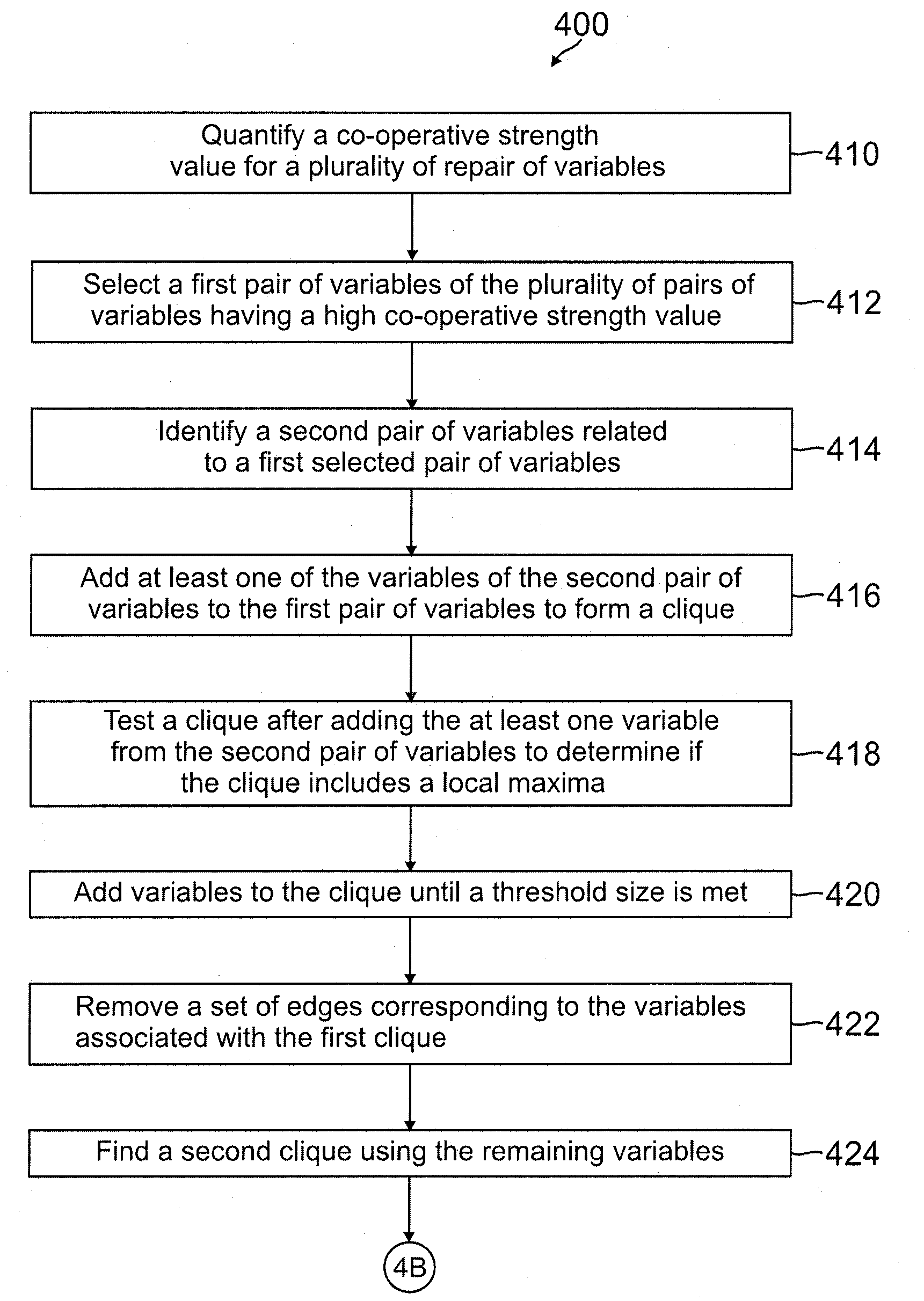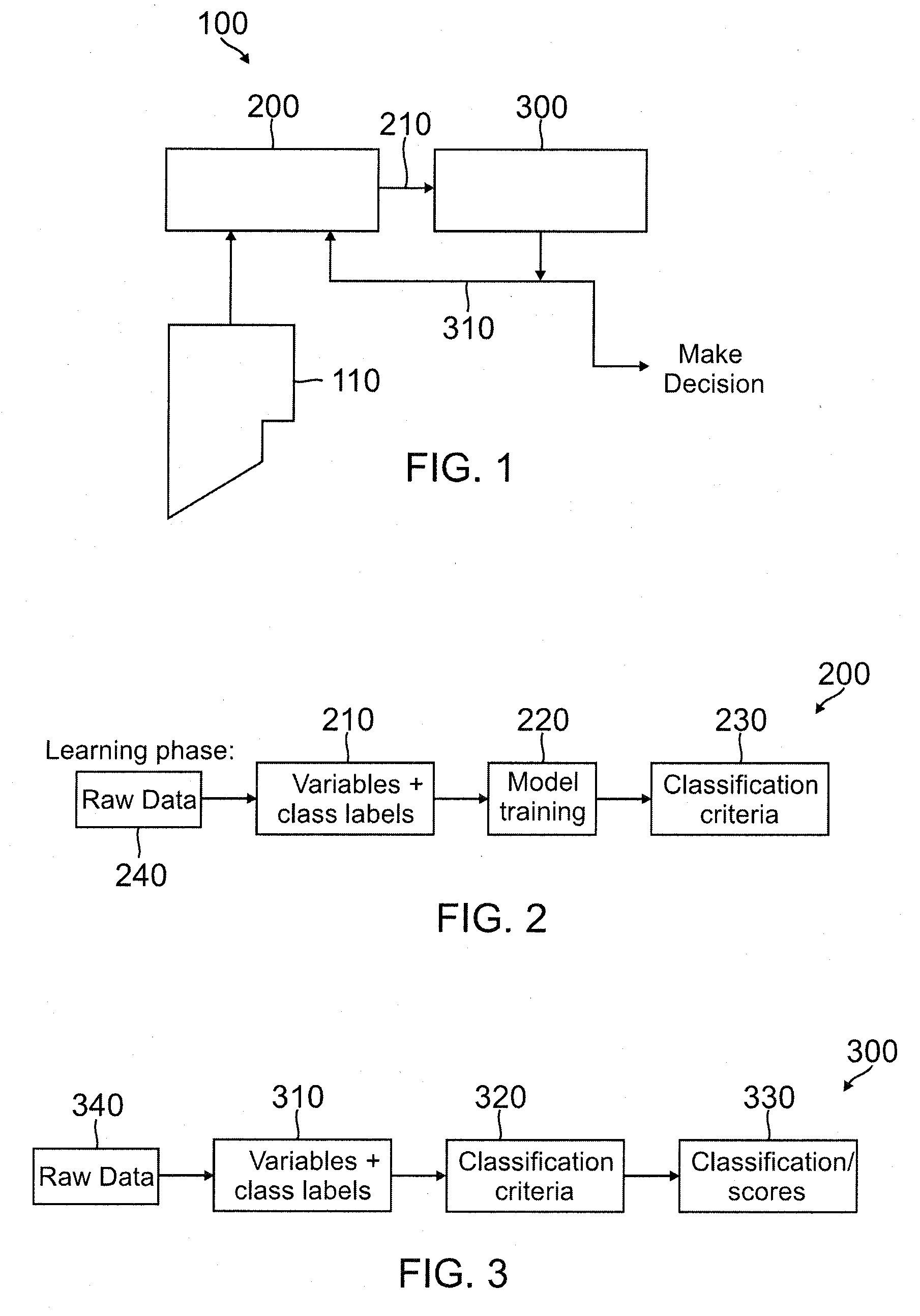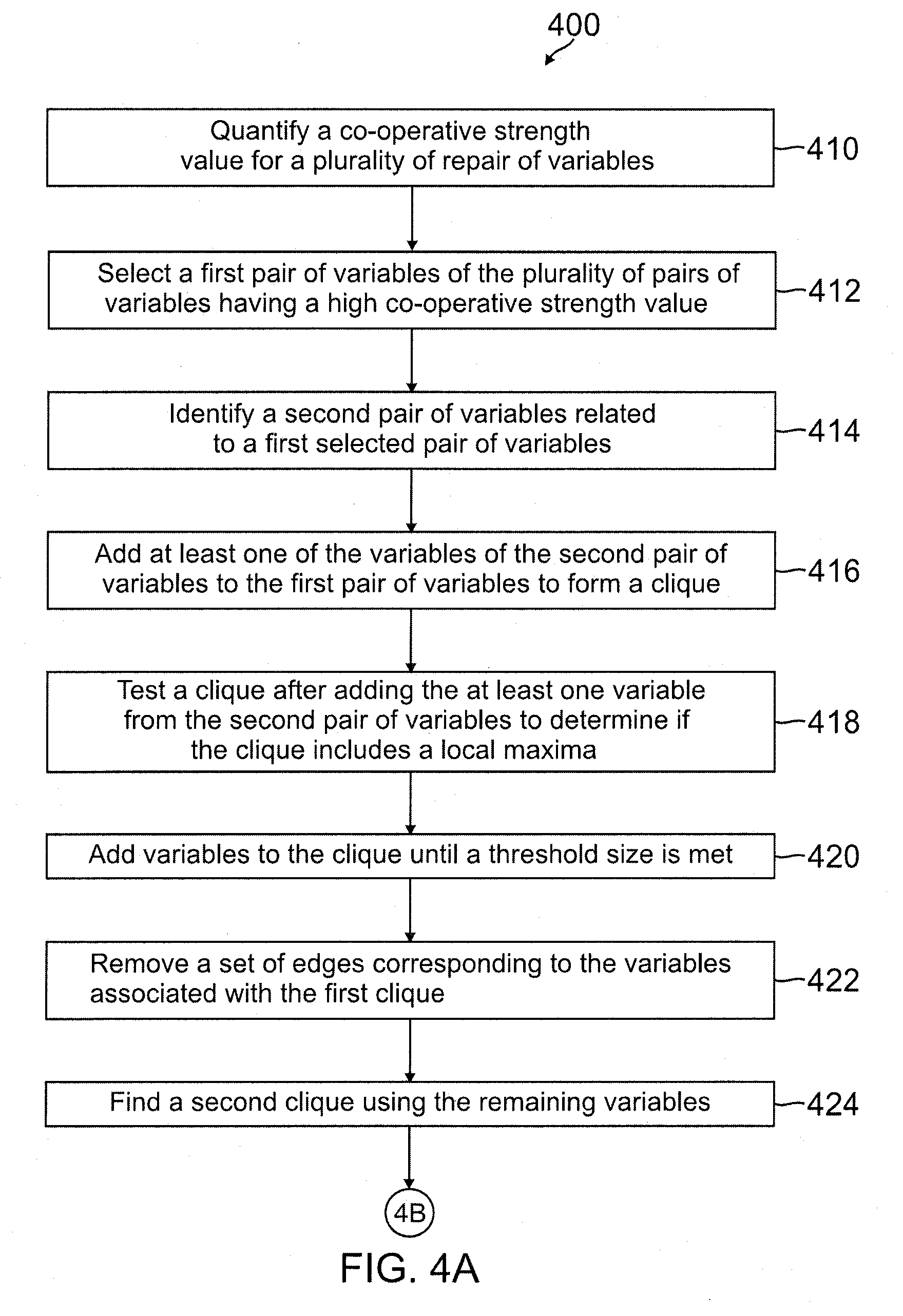Co-occurrence consistency analysis method and apparatus for finding predictive variable groups
- Summary
- Abstract
- Description
- Claims
- Application Information
AI Technical Summary
Problems solved by technology
Method used
Image
Examples
Embodiment Construction
[0014]FIG. 1 is a block diagram of an example fraud detection system 100 that uses at least one embodiment of the invention. As shown in FIG. 1, the fraud detection system 100 includes a learning component 200 and a predictive / scoring component 300. The learning component 200 processes historical data 110 and recognizes various patterns. The learning component has an output 210. The output 210 from the learning component 200 is a model that can be used with live or substantially real time data to predict or detect a fraud. The output 210 of the learning component 200 is input to the predictive / scoring component 300 which categorizes the transaction as fraudulent and scores the likelihood that the transaction is fraudulent. This output 310 can then be used by an institution that can either approve or disapprove a transaction. The output 310 can also be fed back into the learning component 200 to be used by the learning component 200 to further refine the model, represented by output ...
PUM
 Login to View More
Login to View More Abstract
Description
Claims
Application Information
 Login to View More
Login to View More - R&D
- Intellectual Property
- Life Sciences
- Materials
- Tech Scout
- Unparalleled Data Quality
- Higher Quality Content
- 60% Fewer Hallucinations
Browse by: Latest US Patents, China's latest patents, Technical Efficacy Thesaurus, Application Domain, Technology Topic, Popular Technical Reports.
© 2025 PatSnap. All rights reserved.Legal|Privacy policy|Modern Slavery Act Transparency Statement|Sitemap|About US| Contact US: help@patsnap.com



